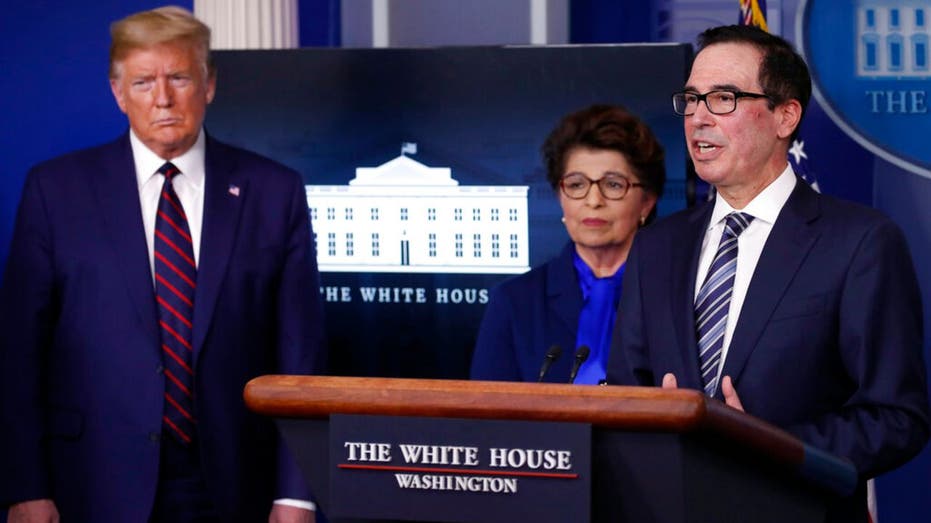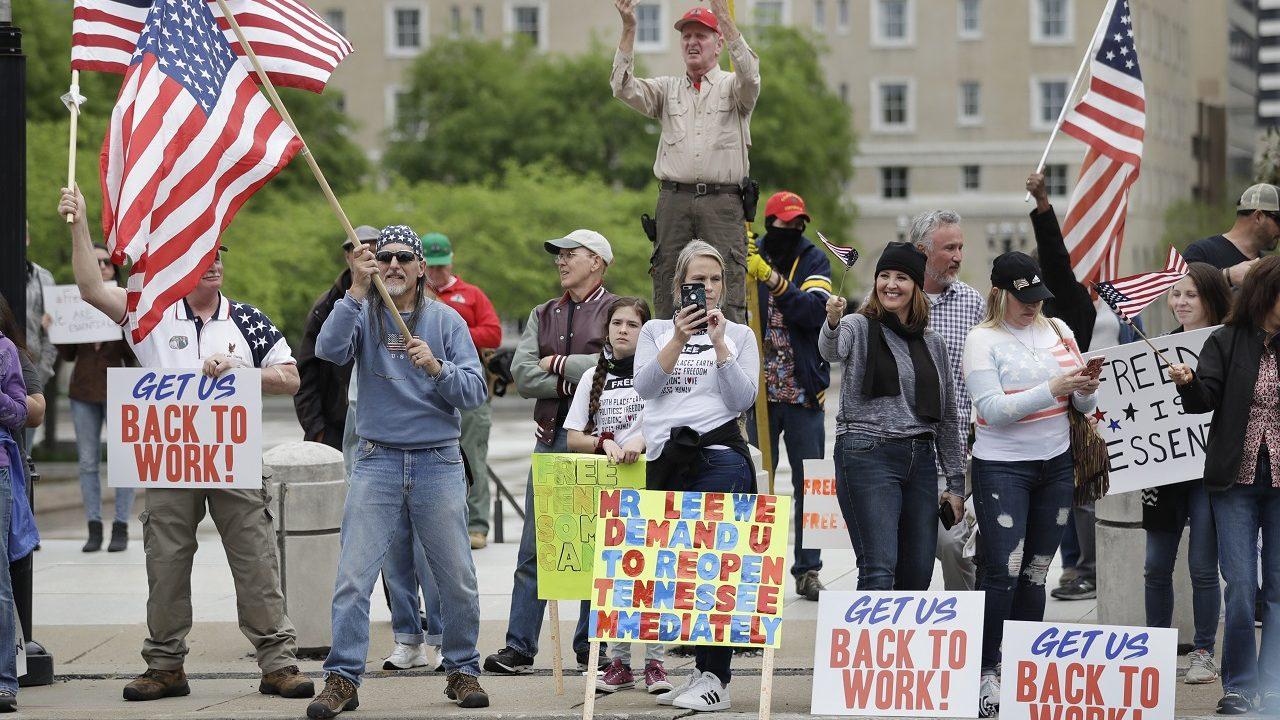US expected to revise coronavirus small business aid program
The government also is expected to extend the time to spend the loan money
Get all the latest news on coronavirus and more delivered daily to your inbox. Sign up here.
WASHINGTON -- Lawmakers and government officials are preparing to make significant changes to the Paycheck Protection Program, amid cooling demand for government-backed loans and criticism from business owners who say they can't tap the funds.
The changes are likely to include giving businesses more flexibility to spend the money, according to lawmakers and others following the deliberations. Under the original terms, 75% of the funds were required to be spent on employee salaries for the loans to be forgiven.
SBA RELEASES CORONAVIRUS PPP LOAN FORGIVENESS APPLICATION
The government also is expected to extend the time to spend the loan money beyond the two months it originally set. Both changes follow complaints from restaurants, hair salons and others who say they can't hire back staff while they are closed during the coronavirus pandemic and need more money to cover their overhead costs.
"When we conceived the program, we thought businesses would be able to get up and running after eight weeks, but we know now that's not the case," Sen. Ben Cardin of Maryland, the top Democrat on the small business panel, said in a statement.

President Donald Trump and Jovita Carranza, administrator of the Small Business Administration, listen as Treasury Secretary Steven Mnuchin speaks about the coronavirus in the James Brady Press Briefing Room of the White House, Thursday, April 2, 202
Officials from the Small Business Administration, which administers the program, didn't respond to requests for comment. But Treasury Secretary Steven Mnuchin, who has been steering SBA policy on the program, indicated in a televised interview last week that "technical fixes" would be made to address concerns raised by some businesses.
The steps being considered will mean a shift in the program's focus -- from one that was primarily aimed at keeping employees on the payroll, to also helping to keep small businesses from failing.
"Liberalizing the rules by lowering the requirement to spend 75% on payroll-related costs and/or extending the time frame that funds can be used is critical for the survival prospects of millions of small businesses, and the ultimate success of this program," said Ann Marie Mehlum, a former top SBA official and senior adviser at FS Vector, a financial advisory firm.
Change is being driven in part by cooling demand for loans, which business advocates say reflects an inability of companies to use the money.
'LOVE & HIP HOP' ALUM USED CORONAVIRUS SMALL BUSINESS PPP LOAN TO BUY $85K OF JEWELRY: FEDS
The initial tranche of $350 billion in loans ran out April 16, after about two weeks. But three weeks after the second $310 billion tranche of funding was opened up, about 37% of the funds remained available, according to figures on the SBA website.
Changes to the program could help business owners like Janice Riordan, who runs a women's clothing boutique in Venice, Fla.

People wait in line to have their hair cut at Primo's barbershop on Monday, May 4, 2020, in Vacaville, Calif. Juan Desmarais, a former US Marine, re-opened his business on Friday, May 1, 2020, after realizing it could be months before he had permissi
After receiving her PPP loan, she has only been able to bring back three of her six employees. She lost $250,000, or 70%, of her revenue between mid-March and early May, a peak season.
Even after her store reopened on May 4 after a month's closure, sales are running at 30% below normal levels. Unopened boxes of merchandise are piled high in the back room and paying her expenses, vendors and business credit-card debt is a struggle, she says.
"Mostly, I have become angry. I think it's part of the grieving process, " she said. "I feel it isn't worth taking this chance. At the push of a button, it could be halted again," she said.
Changes are expected to come in two waves. Technical fixes in a new guideline on loan forgiveness from the Treasury Department and the SBA to be unveiled in the coming days.
CORONAVIRUS AND PPP FRAUD: WHO THE GOVERNMENT IS WATCHING
Treasury and SBA released Friday an application form for loan forgiveness and said that regulations and guidance will be issued "soon" to help borrowers and lenders.
Broader changes could require congressional action. The National Federation of Independent Businesses has asked Congress to expand the repayment period for the amounts that aren't forgiven to five years from the current two years, and to allow businesses to apply for the paycheck program loans more than once if needed.
Alfredo Ortiz, president of Job Creators Network, an advocacy group close to the GOP, said small businesses immediately need administrative guidance from the SBA and Treasury, adding that he expects broader changes to come later as part of the next stimulus package. His group recommends the eight-week period for using funds start once each business is permitted to operate at full capacity by its local government.
"Because otherwise you may have 25% of revenues coming in, which is the maximum mandated by law, but you are being asked to bring in 100% of your payroll. That is a mismatch of cost and revenue. As a business person, you will never do that," Mr. Ortiz said.
GET FOX BUSINESS ON THE GO BY CLICKING HERE
The program generally aims to provide businesses that employ 500 or fewer people with loans that can be forgiven if the money is used primarily to pay employees.
The SBA's Inspector General issued a report May 8 that said the SBA veered from congressional intent in some cases, noting that the 75% payroll rule was never mandated by the legislation.
CLICK HERE TO READ MORE ON FOX BUSINESS
The SBA told the Inspector General that the 75% rule was imposed to "effectuate the core purpose of the statute and ensure finite program resources are devoted primarily to payroll." Mr. Mnuchin and Sen. Marco Rubio (R., Fla.) contend it would require legislative action to change the 75% rule.




















